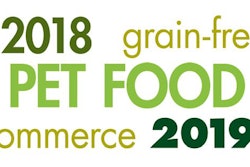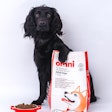
Alongside our annual pet food market trends feature for 2019, Petfood Industry asked what the global landscape is expected to look like in the coming year.
Beyond trends: North American challenges in 2019
North America gets a lot of the love when it comes to pet food industry predictions. As a highly mature market, the drivers behind trends are well-established and there’s always something new around the corner to suit continued nuance among consumers in the region. But being a mature market has its challenges, and those challenges means when we talk about what North America might look like in 2019, the answer goes beyond development or expanding markets.
“Saturated markets such as North America and Western Europe will increasingly experience price-pressure — and therefore diminishing gross margins — because the negotiating power of the distribution channels reinforces itself continuously,” said Marcel Blok, owner of Change Stranamics. “If we also take into account that the prices of key ingredients go up — and they can’t be passed on to the consumer — the result is eroding profitability for companies that operate and sell in these regions.”
According to Jared Koerten, head of pet care at Euromonitor International, price pressure will also come directly from consumers.
“One thing that we might see is some pushback against some of the premium pricing that we’re seeing, that traditionally has helped the industry drive a lot of its growth,” said Koerten. “You have consumers willing to pay a higher price to get a premium or superpremium product. So you see some products in the marketplace that have really taken this and continue to move the needle more and more in terms of higher and higher average prices. I think at some point you’re going to see a bit of backlash.
“I think we’re already starting to see it to some extent,” said Koerten, “with the growth in private brand or store brand offerings from specialty retailers, whether it’s a store-based retailer like a pet shop or pet superstore offering products under its own label, or an online specialist like Chewy, Amazon, ZooPlus or some of these other big online retailers that are continuing to innovate with their own private brands and labels that offer the premium quality that consumers are looking for, but they’re doing it at a more competitive price point.”
In fact, the growing online presence of pet food is expected to play a role all over the world in terms of industry growth.
“There is no doubt that online will see significant growth in most regions,” said Blok. “Certainly also for pet food; both Amazon and Alibaba have issued statements to this effect. And smaller national or regional players will keep mushrooming. After all, online is still in its early stages of development and still experiences a lot of trial and error. In this diffuse development pet food manufacturers will have to find their way. This will result in 2019 in a boom of so-called online strategies that will not differ significantly from each other.”
China: Still the top regional market to watch
China’s pet food market has been on the industry’s radar for a while now, and according to experts it will stay there as the segment continues to grow.
“The Chinese pet market continues to grow, due in part to an increase in disposable income,” said Jacinthe Moreau, president of the World Pet Association (WPA). “Additionally, China’s pet legislation was recently updated to lower dog licensing fees from US$285 per year to US$35 in most suburban areas, making pet ownership more affordable. The industry has seen significant gains, with a rise in spending on pet care and supplies to US$25 billion in 2017 — an increase of 27 percent from the year before. Many Chinese pet owners prefer U.S. brands to local ones, that could give an advantage to U.S. manufacturers, but the tensions emerging from the tariff war are making it more difficult for U.S. companies to export in China.”
Asia overall has some interesting things going on in the pet food segment, as the sheer size potential boosts market interest.
“Asia is definitely ground zero for a lot of the future growth, and we’re going to see a lot of development here just given the potential size of that market,” said Koerten. “There’s definitely growing interest among Chinese consumers, and even some consumers in Indonesia and Southeast Asia that are starting to adopt some of the ideas of pet humanization trends and are starting to become more similar to what we’re attuned to in North America. So even if the pet humanization levels are still well below what they are in the West, the fact that they’re starting with such a massive potential population base showcases that even a slight move could result in some very, very strong market growth.”
China’s growth could mean challenges for other markets on the industry radar.
“China will most likely take second place in the top 10 of pet food consuming countries, to the detriment of Brazil,” said Blok. “Not only because of continued high growth, but also because the per ton value is higher in China. One of the reasons for this is that China has an attractive wet pet food market — both volume and value — an important segment that Brazil is lacking.”
Other markets of note in 2019
Brazil: “I think Brazil already has a pretty high level of spending on pet care relative to other consumer goods industries,” said Koerten. “Pet is already relatively well developed in Brazil, and I think they continue to have a pretty optimistic outlook on what that could continue to involve with humanization trends in Brazil.”
India: “India is seeing growth in the pet products industry primarily because they have a strong retail-centered economy,” said Moreau. “Research reports indicate that Indian consumers have been slow to embrace commercial pet foods in the past, opting to feed their pets homemade meals. But the commercial pet food market is slowly growing, with a prediction that the market could reach about US$270 million by 2019, according to TechSci Research.”
Japan: “Japan is continuing to have some struggles, primarily with its pet ownership base, an aging and declining pet ownership segment there,” said Koerten. “Still very, very high interest in pet, and high humanization levels, but they don’t have the same prospects when it comes to the demographic outlook.”
Mexico: “Mexico is another area of strong interest,” said Koerten. “A lot of potential, especially with dogs, which tend to index very highly in Mexico. And they definitely have some strong prospects for continued growth in that market.”
Russia: “The Russian pet food market was valued in 2016 at US$920.2 million and could reach as high as US$1.18 trillion by 2022, according to research group Mordor Intelligence,” said Moreau. “Because it is seen as a more responsible pet ownership approach, Russians are moving away from feeding their pets human food to feeding them manufactured pet food, which is having a big impact on how the country's pet food industry has been shaping.”
For the full companion article, "3 pet food trends driving industry growth in 2019,” published in the January 2019 issue of Petfood Industry magazine, see www.PetfoodIndustry.com/articles/7711.



















